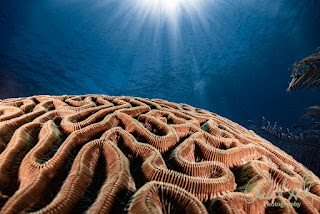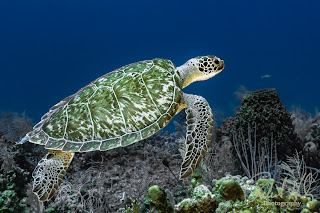Exploring the Depths: A Dive into Night Diving Photography
The underwater world has always captivated the human imagination. From vibrant coral reefs to elusive marine life, the depths of the ocean hold a myriad of wonders waiting to be discovered. While daytime diving offers its own enchantments, night diving photography opens up a whole new realm of possibilities, presenting challenges and rewards that are unique to the nocturnal underwater experience.
Challenges of Night Diving Photography: Night diving photography introduces a set of challenges that differ significantly from daytime shooting. The lack of natural light poses one of the most significant hurdles, requiring photographers to rely on artificial light sources. Maneuvering in low visibility conditions, managing buoyancy, and dealing with unpredictable marine life behavior all add to the complexity of the task.
1. Limited Visibility: One of the primary challenges of night diving photography is the reduced visibility. Even with a powerful underwater flashlight, the range of your vision is limited. This demands a heightened sense of awareness and a familiarity with the dive site during daylight hours.
2. Temperature and Buoyancy: Nighttime temperatures in the water can drop, affecting both the photographer and the camera equipment. Additionally, buoyancy control becomes more critical in the dark, requiring divers to be more conscious of their movements to avoid disturbing marine life or stirring up sediment.
3. Finding Subjects: Nocturnal marine life often differs from what you might encounter during the day. Locating and capturing images of elusive creatures, such as octopuses, lobsters, or night-hunting fish, requires patience and a keen eye.
Rewards of Night Diving Photography: While the challenges are undeniable, the rewards of night diving photography are equally compelling. The underwater world transforms under the cover of darkness, unveiling a vibrant nightlife that often remains hidden during the day. Bioluminescent organisms, nocturnal predators, and the serene dance of underwater flora take center stage, creating a surreal and enchanting atmosphere that is unparalleled.
1. Bioluminescence: One of the most magical aspects of night diving is witnessing bioluminescent organisms. From tiny plankton emitting a soft glow to the shimmering trails left behind by swimming organisms, capturing these ethereal moments can result in breathtaking images. In a future blog post I will go into much more details on capturing Bioluminescence.
2. Unique Behavior: Many marine species exhibit different behaviors at night. Some become more active in search of prey, while others retreat into the shadows. Capturing these behaviors provides a rare glimpse into the nocturnal lives of underwater creatures.
3. Ambiance and Tranquility: Night diving offers a sense of tranquility and solitude that is distinct from daytime experiences. The play of light and shadow, along with the silence of the underwater world at night, creates an otherworldly ambiance that can be incredibly rewarding to capture.
Specialty Equipment for Night Diving Photography:
1. Underwater Flashlights: Essential for navigating the underwater environment and illuminating subjects, underwater flashlights come in various sizes and power levels. Some are designed specifically for photography, providing a wide, even beam of light.
2. Strobes: Underwater strobes help to freeze motion and add vibrant colors to your images. They are crucial for capturing the vivid details of marine life that may be lost in the low light conditions of the deep.
3. Red Lights: Some photographers opt for red lights to minimize disturbance and preserve the natural behavior of marine life. Red light is less likely to startle or disturb nocturnal creatures, allowing for more authentic and less intrusive shots.
4. Focus and Dive Lights: Diving in the dark requires additional lighting for focusing and navigating. A focus light helps the camera lock onto subjects, while a dive light assists in navigating the underwater terrain.
Macro or Close-up Wide Angle? - Choosing between macro and close-up wide-angle photography largely depends on the subject and the story you want to tell.
1. Macro Photography: Ideal for capturing the intricate details of small marine life, macro photography involves shooting subjects up close. Creatures like nudibranchs, seahorses, and small crustaceans become fascinating subjects.
2. Close-up Wide Angle: This technique involves capturing larger subjects or scenes with the addition of a foreground element. It provides a sense of scale and context, making it suitable for photographing reefscapes, larger fish, or divers exploring the underwater world.
In conclusion, night diving photography is a unique and rewarding pursuit for underwater enthusiasts. While it presents its own set of challenges, the opportunity to witness and capture the mysteries of the nocturnal underwater world is unparalleled. With the right equipment, techniques, and a sense of adventure, night-diving photography can open a portal to a mesmerizing realm hidden beneath the surface of the ocean.
Let me assist you in your underwater photographic journey with my upcoming online training course, which I will be announcing soon. If you are keen on acquiring more knowledge about it, kindly email me at bob@robertherb.com. You can also visit my website (Robert Herb Photography) to view some of my exemplary work.
I am eagerly anticipating your valuable feedback and suggestions.
Sincerely,
Bob Herb




Comments
Post a Comment
Please let me know your comments.